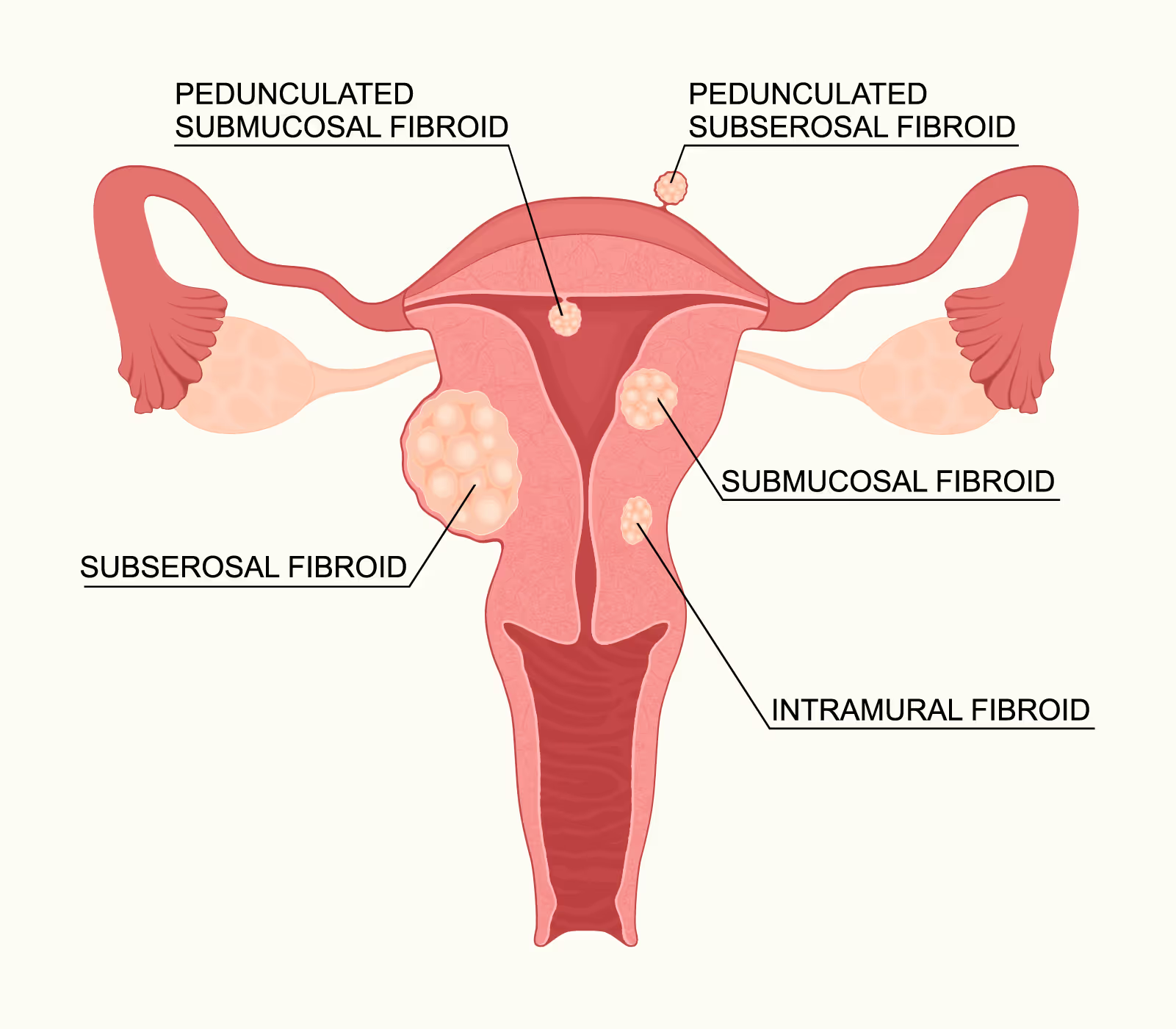Adenomyosis

What Is Adenomyosis?
Adenomyosis is a common gynecologic condition where the tissue that normally lines the uterus begins to grow into the muscular wall of the uterus. It is often called the "sister condition" to endometriosis.
Think of the uterine lining like soil and the muscle wall like the ground beneath it. In adenomyosis, the "soil" begins to grow down into the "ground," embedding itself within the muscle. This misplaced tissue continues to act as it normally would (thickening, breaking down, and bleeding during each menstrual cycle), which causes the uterine wall to become thick, swollen, and painful. Affecting an estimated 20-35% of women, it is a frequent cause of significant gynecologic symptoms.
The "Adenomyosis Uterus"
Unlike fibroids, which are distinct lumps, adenomyosis is typically a more diffuse condition that changes the entire texture and size of the uterus. Doctors often describe the affected uterus as:
- Globally enlarged and bulky
- "Boggy" or soft and tender to the touch
- Thickened, especially one wall compared to the other
Types of Adenomyosis
Based on findings from imaging and pathology, adenomyosis is generally classified into two types:
- Diffuse adenomyosis: The most common form, where the misplaced tissue is spread widely throughout the muscular wall of the uterus.
- Focal adenomyosis: The tissue is concentrated in one specific area, forming a localized nodule called an adenomyoma. These can often be mistaken for fibroids.

Common Symptoms
The two classic symptoms of adenomyosis are:
- Heavy or prolonged menstrual bleeding
- Severe menstrual cramps and uterine pain
Other common symptoms include:
- Chronic pelvic pain or a feeling of heaviness/pressure in the pelvis
- An enlarged, tender uterus
- Pain during sex
- It has also been linked to infertility and pregnancy complications.
The pain is often described as a deep, cramping, or aching uterine pain that can be debilitating.
A Disease of Co-existence
One of the most important facts about adenomyosis, confirmed in major medical reviews, is that it rarely exists alone. It very frequently co-exists with other gynecologic conditions, which can make diagnosis complex.
- Up to 50% of women with adenomyosis also have fibroids.
- There is a very strong association with endometriosis.
This overlap is why seeing a specialist who can differentiate between these conditions is critical for creating the right treatment plan.
The Path to Diagnosis
Historically, adenomyosis could only be definitively diagnosed by examining the uterus under a microscope after a hysterectomy. Today, however, advances in non-invasive imaging allow for improved accuracy in clinical diagnosis.
- Transvaginal Ultrasound: This is the first-line diagnostic tool. A skilled ultrasonographer looks for telltale signs like a thickened uterine wall, small cysts within the muscle, or a "fuzzy" border between the uterine lining and the muscle.
- MRI: An MRI is often used in more complex cases to provide a more detailed view of the uterus and help differentiate adenomyosis from fibroids.
While pathology remains the technical gold standard, a clinical diagnosis based on your symptoms and these advanced imaging techniques is now the standard of care.
What Are My Treatment Options?
Non-Surgical Options
- Hormonal IUD (Mirena): Often considered the first-line treatment. It releases a hormone directly into the uterus, which thins the lining and can dramatically reduce heavy bleeding and pain.
- Hormonal Medication: Birth control pills or other medications can help manage symptoms by controlling the menstrual cycle.
- Pain Medication: NSAIDs can help manage cramping.
Minimally Invasive & Surgical Options
- Uterine Artery Embolization: Can be an option to reduce blood flow to the uterus, but its effectiveness for adenomyosis can vary.
- Laparoscopic Hysterectomy: This is the only definitive cure for adenomyosis, as it involves the complete removal of the affected organ. For women who have completed childbearing and suffer from severe symptoms, a minimally invasive hysterectomy provides complete and permanent relief.
- Uterus-Sparing Surgery: In specific cases of focal adenomyosis, a skilled MIGS surgeon can perform a minimally invasive procedure to surgically excise, or cut out, the localized nodule of disease, similar to a myomectomy.
Questions to Ask Dr. Kim During Your Visit
- Based on my symptoms and ultrasound, could I have adenomyosis?
- How can we tell if my symptoms are from adenomyosis, fibroids, or endometriosis?
- Would a hormonal IUD be a good first step for my symptoms?
- Am I a candidate for a uterus-sparing surgery, or is a hysterectomy a better long-term solution for me?
Why Choose Us?
We provide expert care for fibroids with a focus on:
- You’ll work exclusively with Dr. Kim throughout your journey
- Direct call/text access to Dr. Kim
If you're living with adenomyosis symptoms, you have more options than you think. Contact us today to learn more about adenomyosis care and arrange a visit to our Park Ave office based in the Upper East Side, New York City.


